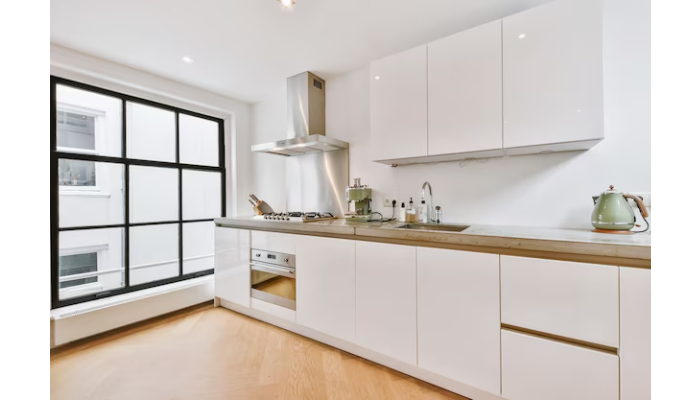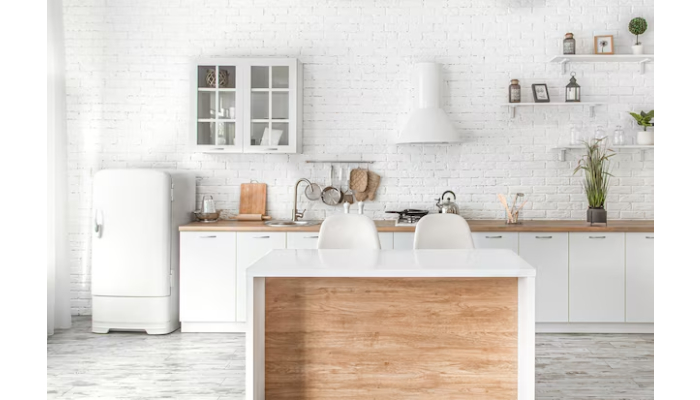How To Choose The Best Kitchen Cabinet Hinges For Smooth And Silent Operation?
Kitchen cabinet hinges play a crucial role in ensuring the functionality and durability of your cabinets. They provide the necessary support for doors, allowing them to open and close smoothly while maintaining a silent operation. Selecting the right hinges can enhance your kitchen’s overall efficiency and aesthetic appeal. With numerous options available on the market, choosing the best hinges requires careful consideration of various factors, including hinge type, material, durability, and installation requirements. This guide will help you understand what to look for in kitchen cabinet hinges and how to choose the best ones for smooth and silent operation.
Types Of Kitchen Cabinet Hinges
Understanding the different types of Kitchen Cabinet Hinges available is essential to making an informed decision. Here are some common types:
1. Butt Hinges
Butt hinges are traditional two-leaf hinges that connect with a central pin. They are typically visible when the cabinet is closed and require a mortise for installation. They are durable but may not always provide the silent and smooth operation needed for modern kitchens.
2. Concealed Hinges (Euro Hinges)
Concealed hinges, also known as European hinges, are hidden inside the cabinet when the door is closed. They offer a sleek and modern look while ensuring a soft-close function. These are ideal for those who want a quiet and seamless operation.
3. Soft-Close Hinges
Soft-close hinges are designed with a built-in mechanism that prevents doors from slamming shut. These are excellent for families with children or anyone looking for a quiet kitchen environment.
4. Self-Closing Hinges
Self-closing hinges automatically pull the cabinet door shut when it is near the closed position. They help maintain an organized kitchen while reducing noise and preventing damage caused by forceful closing.
5. Face Frame Hinges
Face frame hinges are used for cabinets with a face frame structure. They come in different styles, including exposed or concealed designs, depending on the desired aesthetic.
6. Inset Hinges
Inset hinges are designed for doors that sit flush with the cabinet frame. They can be either visible or concealed and provide a clean, elegant appearance.
7. Overlay Hinges
Overlay hinges are for cabinets where the door covers part or all of the cabinet frame. They come in full or partial overlay options, allowing customization based on cabinet design.
Factors To Consider When Choosing Kitchen Cabinet Hinges
1. Material and Durability
The material of the hinge affects its longevity and performance. Stainless steel, brass, and nickel-plated steel are among the most durable options. Stainless steel hinges are rust-resistant and suitable for humid environments like kitchens.
2. Silent and Smooth Operation
For a quiet kitchen, opt for soft-close or self-closing hinges. These hinges prevent sudden slamming and extend the life of your cabinets by reducing impact damage.
3. Weight Capacity
Ensure the hinges can support the weight of your cabinet doors. Heavier doors require stronger hinges, such as those with double-spring mechanisms or ball-bearing pivots.
4. Adjustability
Adjustable hinges allow fine-tuning of the cabinet door’s alignment. Look for hinges with multi-directional adjustment options to achieve a perfect fit.
5. Aesthetic Appeal
Hinges come in various finishes, such as brushed nickel, matte black, and polished brass. Select a finish that complements your kitchen decor.
6. Ease of Installation
Some hinges require professional installation, while others can be easily installed with basic tools. Concealed and European hinges often need precise drilling, whereas surface-mounted hinges are simpler to install.
7. Budget Considerations
High-quality hinges may cost more but offer better durability and performance. Investing in premium hinges can save money in the long run by reducing the need for frequent replacements.
Installation Tips For Kitchen Cabinet Hinges
- Measure and Mark Correctly – Before drilling, ensure precise measurements to avoid misalignment.
- Use a Template – Hinge templates help in accurate hole placement, making installation easier.
- Drill Pilot Holes – Pre-drilling holes prevent wood from splitting and ensure a secure fit.
- Check Alignment – Adjust the hinges as needed to ensure smooth opening and closing.
- Test Before Finalizing – Before securing all screws tightly, test the cabinet door’s movement and make necessary adjustments.
Maintenance And Care
Proper maintenance of hinges extends their lifespan and keeps them functioning smoothly. Here are some tips:
- Regular Cleaning – Wipe hinges with a damp cloth to remove dust and grease buildup.
- Lubrication – Apply a small amount of lubricant to prevent squeaking and ensure smooth movement.
- Tighten Loose Screws – Periodically check and tighten screws to maintain door alignment.
- Replace Worn-Out Hinges – If hinges become rusty or damaged, replace them promptly to avoid further cabinet issues.
Conclusion
Selecting the right kitchen cabinet hinges is essential for achieving a smooth and silent operation. Consider factors such as hinge type, material, weight capacity, adjustability, and ease of installation to find the best fit for your kitchen. Soft-close and concealed hinges are excellent choices for a modern, noise-free environment. Proper installation and maintenance ensure long-lasting performance, enhancing both functionality and aesthetics. Investing in high-quality hinges will improve the overall experience of using your kitchen cabinets, making everyday tasks more convenient and enjoyable.





